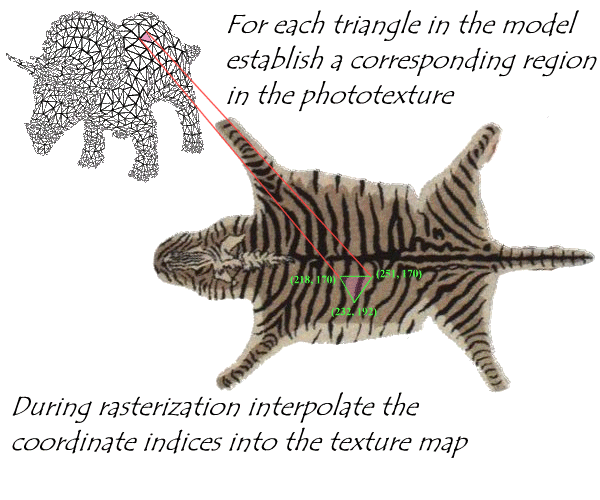Photo-textures
Increased scene detail without increasing geometric complexity

Ed Catmull, who later founded Pixar, was sitting in his car in the parking lot of the engineering building at the University of Utah in 1974 thinking about how to make a more realistic computer animation of a castle. The problem was that modeling the rough stone walls would require prohibitively many polygons. Even if he were only interested in the color variation, not the geometric variation (bumpiness), it would still require a new polygon for each point that had a different color.
What approach would you take? He concluded that if pictures of the stone wall could be stored for reference and then be applied or mapped onto the otherwise smoothly shaded polygon, then the result would be increased scene detail without increasing geometric complexity (and its associated increased difficulty in modeling the scene).
In effect, texture mapping simply takes an image (a texture map) and wallpapers it onto the polygons in the scene.
Since those days, texture mapping has become the most important method of increasing the level of detail of a scene without increasing its geometric complexity (the number of geometric primitives in the scene).